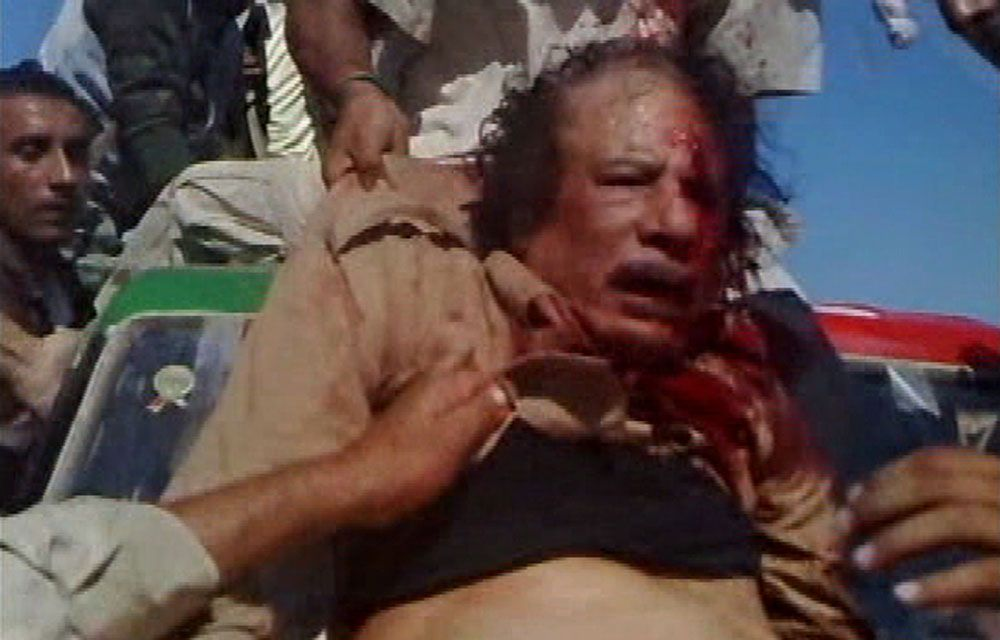Tags : CIA, United States, France, Algeria, oil, petrol, colonization, Morocco, Western Sahara, Spain, Spanish Sahara, Algerian Sahara,
The document discusses the complexities surrounding French plans for the partition of Algeria, particularly in light of significant oil discoveries in the Sahara Desert. The French are determined to retain control over the Saharan oil wealth, regardless of the outcome of the conflict in northern Algeria. They argue that the Sahara is geographically and legally separate from the north and is under French military control. The proposed partition would involve creating autonomous territories in northern Algeria based on ethnic lines, while the southern territories would remain part of France.
From the Algerian nationalist perspective, control over Saharan oil is crucial for the economic viability of an independent state. The French, however, face challenges in transporting the oil to market due to rebel activity in northern Algeria. They are considering pipelines through Libya and Spanish Sahara to avoid these risks. Major oil discoveries are concentrated in the Sahara, with significant fields like Hassi Messaoud and Edjele. The French have also discovered a new gas field, which could provide cheaper power and reduce the need for an atomic energy plant.
The French have taken steps to secure their oil interests, including negotiating boundary demarcations with Libya to ensure ownership of oil fields and planning pipelines through Spanish territory to avoid Moroccan claims. The sovereignty of certain areas, particularly near the Algerian-Moroccan frontier, remains unresolved, complicating matters further.
In conclusion, the French government is focused on maintaining control over Algeria’s oil wealth, ensuring access to markets through stable routes, and keeping the Sahara separate from any partition plans affecting northern Algeria. The oil-producing areas of south-western Algeria strangely coincide with the territorial claims of Hassan II, which were the cause of the outbreak of the Sands War in October 1963.
—————————————————

CENTRAL INTELLIGENCE AGENCY
OFFICE OF RESEARCH AND REPORTS
Oil and partition in Algeria
French plans for Algerian Partition have been complicated during the past year by the discovery of oil in the Sahara Desert. From the French standpoint, no partition without French control of the Saharan oil wealth could be entertained. In fact, the French are so determined to retain the wealth of the Sahara, no matter what the outcome of the struggle in the north, that they have separated the two problems. They point out that legally the Sahara has been and is separate from the north, that it forms a separate geographic region, that it is under effective French military control, end that no element in the north has exercised control over the Sahara in modern history. The proposal or partition of Algeria, although still evolving, appears to involve the establishment in northern Algeria of several territories, largely autonomous units to be &elim1ted on an ethnic basis. The Southern Territories has become two departments, which remain part of France.
From a nationalistic Algerian standpoint, military success without Saharan oil revenue would mean abandoning the goal of an economically viable state. Any nationalist government that accepted such a solution would ultimately be subject to the charge that it has sold its birthright.
The French are now faced with the problem of getting oil out of the Sahara. Although stability of the entire area is important, oil discoveries during the past year emphasize accessibility to market as the controlling factor. The French are reluctant to risk heavy investment in a pipeline and rail route that would traverse the rebel-infested territory in northern Algeria, and they are now making plans to take the oil to the Mediterranean Sea by means of a pipeline through Libya. French West Africa to the south is rebel-free, but distances to market are much greater than for any other route, and independence for the area is conceded to be less than a decade away. The French solution depends on the location of known oilfields and of concessions where oil may be discovered.
The major oil discoveries in Algeria are confined to the Sahara and to date all concessions are in the bands of French-controlled companies. The southernmost field consists of three structures in east-central Algeria near the Libyan border and about 350 air miles from the nearest point on the Mediterranean coast. The Edjele structure straddles the Libyan frontier and includes 11 wells (of which 7 are producers) strung out for a distance of 43 miles westward toward the interior. The eastward extension of the field into Libya has not been determined. On the immediate westward flank of Edjele is Tiguentourine with 3 wells — all producers and, like most of the Edjele wells, all shallow. A third structure has been found at Zarzaitine, 18 miles north of Edjele.
At present the field with the largest potential is Hassi Messaoud, 50 miles southeast of Ouargla. The French claim that this discovery has a reserve of 7 billion barrels. Hassi Messaoud is only 200 miles from the Libyan border to the southeast and could be tied into a gathering system with the three southern structures.
Somewhat eclipsed by the discovery of oil has been the discovery of a new gas field in the northern Sahara between Laghouat and Ghardaia. The area also contains two oil pools of undetermined character. The French had planned to build an atomic energy plant at Nemours, 300 miles northwest of the field, to alleviate the power shortage of north-western Algeria. The gas field is noteworthy primarily because it reduces the urgency for installing an expensive atomic plant and points to the development of cheap power from local sources. The French plan to use 75 percent of the gas for production of electricity; without doubt the rebels, also, are interested in the gas field.
A fourth area of potential oil production, the SAFREP* concession, is as yet inadequately explored. It’s located south of the Wadi Dras where Algerian territory comes within 180 miles of the Atlantic Ocean. About half of the concession lies in territory of unresolved sovereignty along the Algerian-Moroccan frontier.
The French have taken concrete steps to capitalize on their oil discoveries. These discoveries are separated from their markets by foreign powers on the east and west, by rebel activity on the north, and by vast distances on the south. The first major Saharan strike occurred at Edjele along the undemarcated section of the Algerian-Libyan boundary. In fact, at the time the strike occurred, there was fully as much evidence that it was on Libyan territory as on French territory. For 37 years the French been content to let this boundary remain undemarcated, but with the discovery of oil they set to work to obtain an agreement to demarcate the boundary. For a time, Libyan concurrence was hard to obtain. At any rate the French were able to move the boundary eastward in places, thus definitely incorporating the initial oil strike within Algeria.
With ownership practically assured, the French have announced that they intended to terminate a pipeline from eastern Algeria at some point on the coast of Libya or possibly Tunisia. The decision was buttressed by the placement of orders for pipe.
The French have also taken steps to assure their possession of any oil discovered in western Algeria. Although the French have always maintained that no boundary had been agreed upon between Algeria and Morocco in this part of the Sahara, they said in 1954 that, if cartographic portrayal of the boundary were necessary, line « A » on the accompanying map would be satisfactory. In July 1957 the Institut Géographie National, the official French mapping agency, became alarmed about the boundary portrayal it had agreed to in 1954, which had begun to appear on maps made by U.S. Government agencies. The agency then took steps to disown its previous recommendation — going so far as to say it might be forced to take the matter up with the Foreign Office — and now insists that no boundary be shown. The reversal of French thinking resulted from the grant to SAFREP in June 1956 of a concession that extended as far north as line « B » and the desire to clear the way for claiming any oil that might be discovered in the area between the two lines.
In order to assure an outlet for western Algerian oil, France has made a deal with Spain, preferring to build a pipeline through Spanish territory rather than Moroccan. The sovereignty of the strip of land separating Algeria from the Atlantic Ocean and lying between the Wadi Draa and 27º40’N — called Southern Morocco — is not clear. On the basis of pertinent treaties, the Moroccan claim is believed by the United State’s Government to be sound, but the area is controlled by Spain. Further complications may develop from the interest of American oil companies in obtaining concessions in the area between 27°40’N and the Wadi Draa.
Conclusions
The French Government is determined to keep the oil wealth of Algeria under French control, free from any local nationalistic influence. It is reluctant to firm up any plans for taking substantial quantities of present or potential Saharan oil northward through rebellious areas but instead has concentrated on assuring accessibility of the oil to the Mediterranean Sea through Libya and to the Atlantic Ocean via Spanish Sahara. In the minds of the French, Algerian partition is a question that is halted in area to northern Algeria and does not apply to the Sahara.
SOURCE :
#Morocco #Algeria #France #colonization #Oil #Petrol #AlgerianSahara #Spain #WesternSahara


Be the first to comment on "CIA reveals true motives for Morocco’s 1963 attack on Algeria (declassified document)"